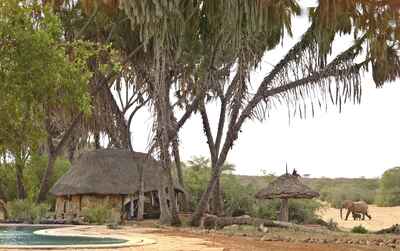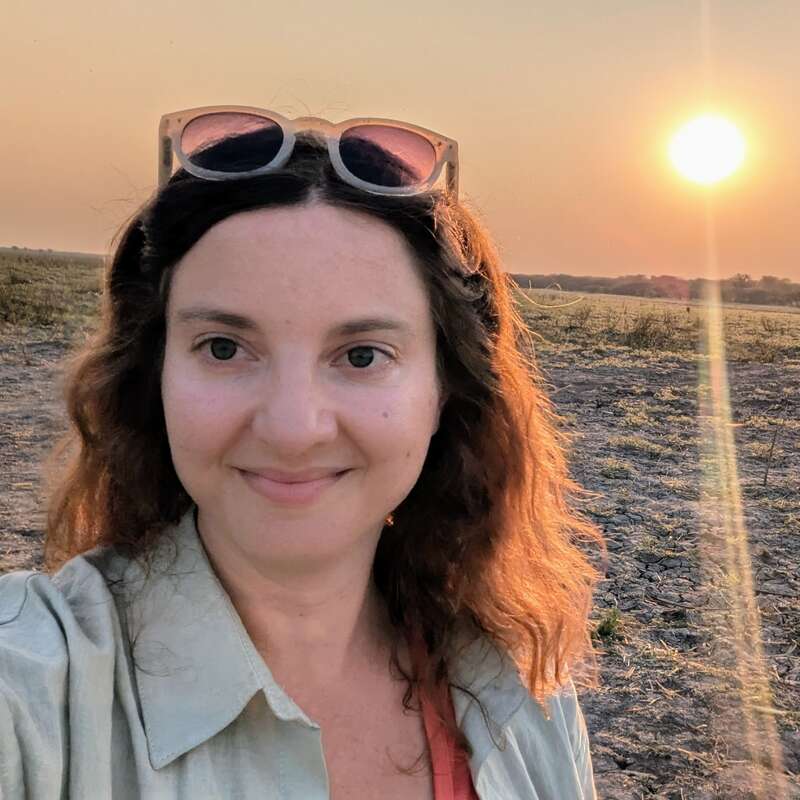About Saruni Rhino
Saruni Rhino is an intimate three-room lodge inside the remote Sera Community Conservancy in northern Kenya.
Built between beautiful doum palms on the banks of the seasonal Kauro River, it opened in 2017 and is the first and only lodge in East Africa to offer safaris specifically focused on tracking the critically endangered black rhino on foot.
Saruni Rhino offers an unparalleled experience in East Africa and enables guests to contribute actively to rhino conservation. The rhino tracking is exhilarating, very proficiently conducted by the well-trained guiding team. The lodge itself is very comfortable, but it's also simple and very remote – and we would recommend this if you enjoy travelling to areas off the beaten path.
Our view
Saruni Rhino offers an unparalleled experience in East Africa and enables guests to contribute actively to rhino conservation. The rhino tracking is exhilarating, very proficiently conducted by the well-trained guiding team. The lodge itself is very comfortable, but it's also simple and very remote – and we would recommend this if you enjoy travelling to areas off the beaten path.
Accommodation
3 bandas
Children
Best for 16+
Open
All year
Activities

4WD Safari

Birdwatching

Cultural excursion

Elephant encounter

Guided walking safari

Private activities
Traveller reviews of Saruni Rhino
3 real, un-edited reviews from Expert Africa's travellers.
Arrived 27 Nov 2019, 3 nights
"Lovely camp but not for green seasons"
Overall rating: Excellent
Arrived 26 Oct 2019, 2 nights
"Spectacular location and service!"
Overall rating: Excellent
Arrived 18 Oct 2019, 2 nights
"Wonderful experience tracking black rhino"
Overall rating: Excellent
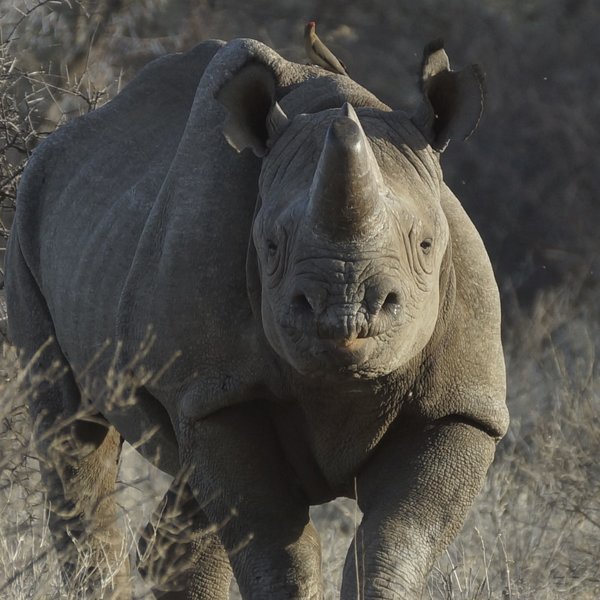
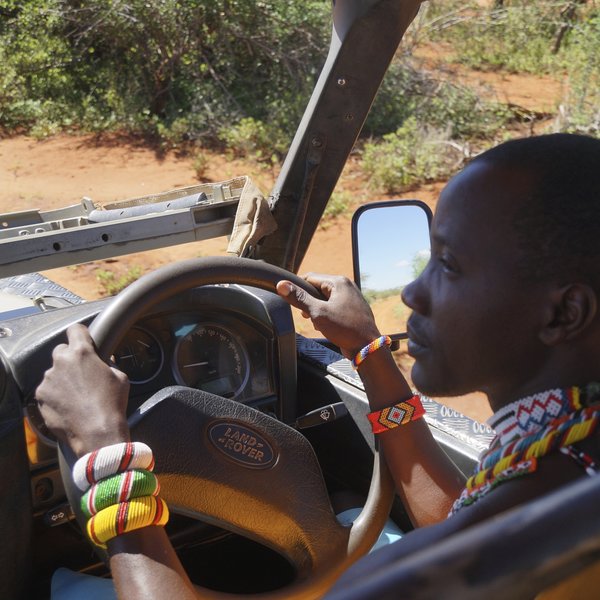
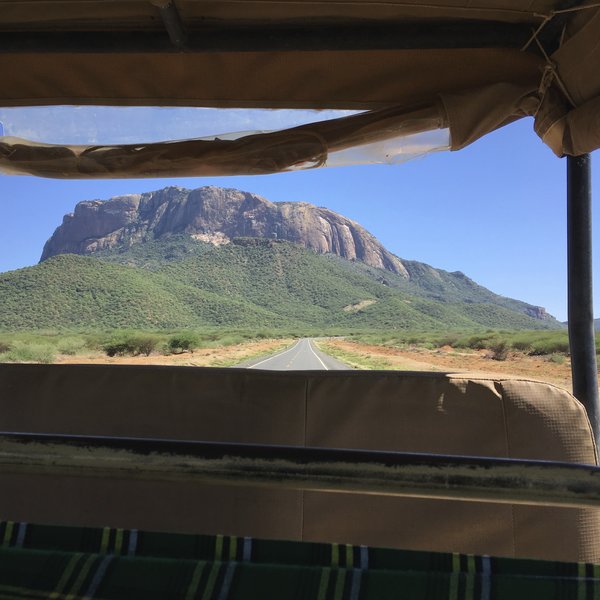
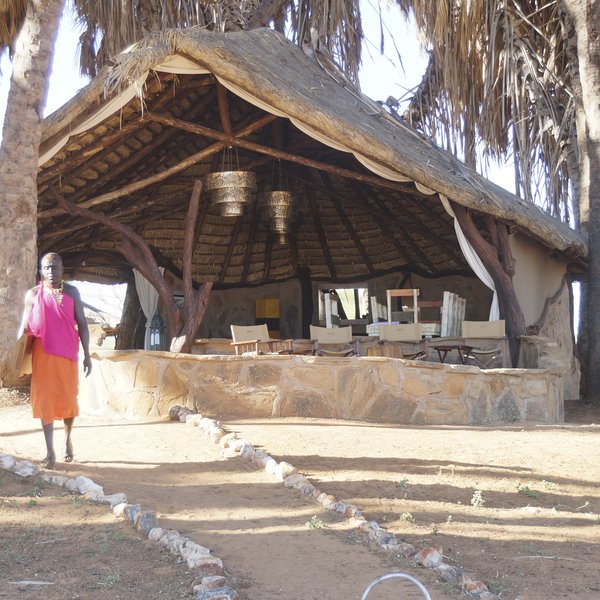
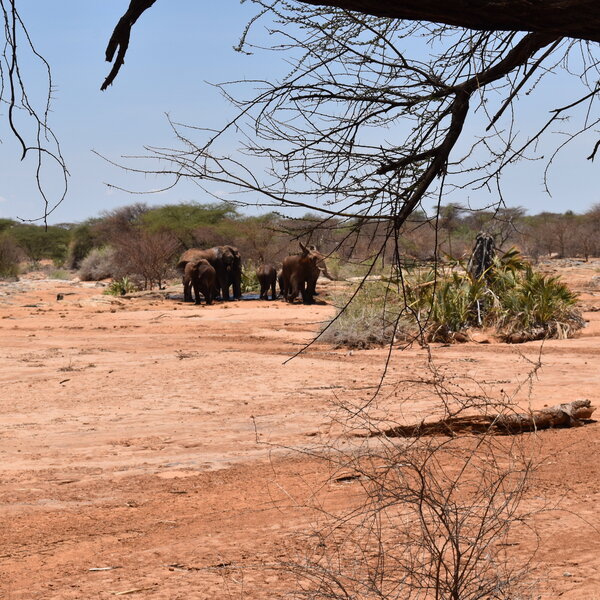
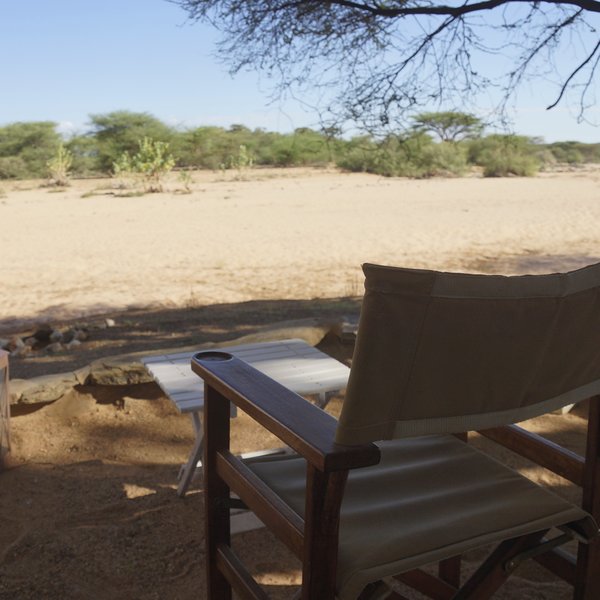
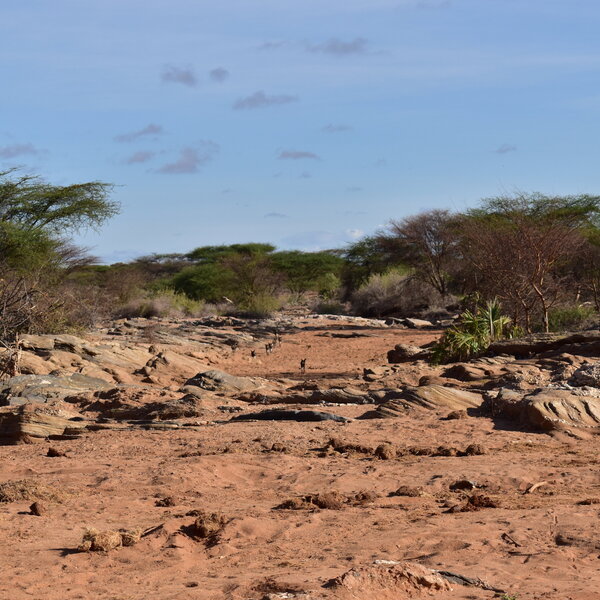
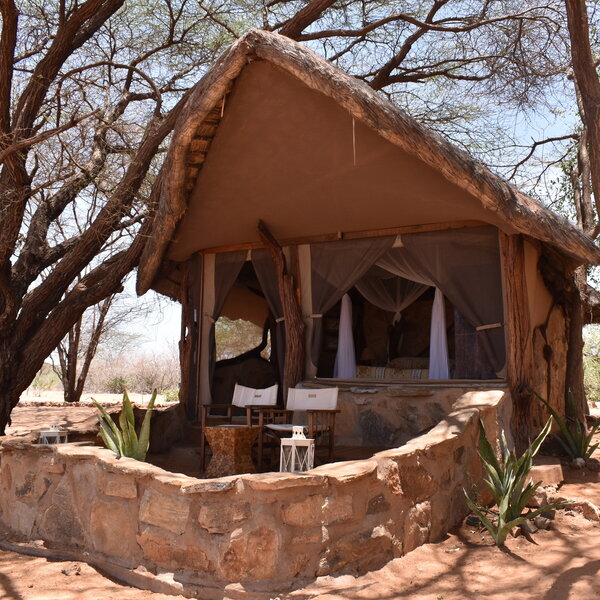
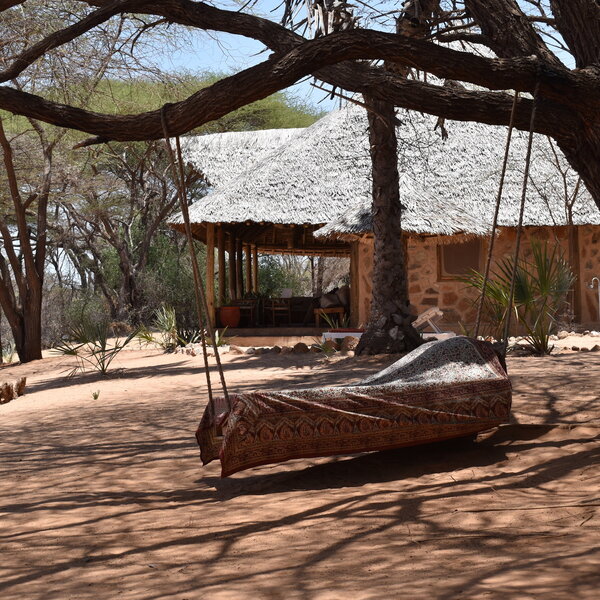
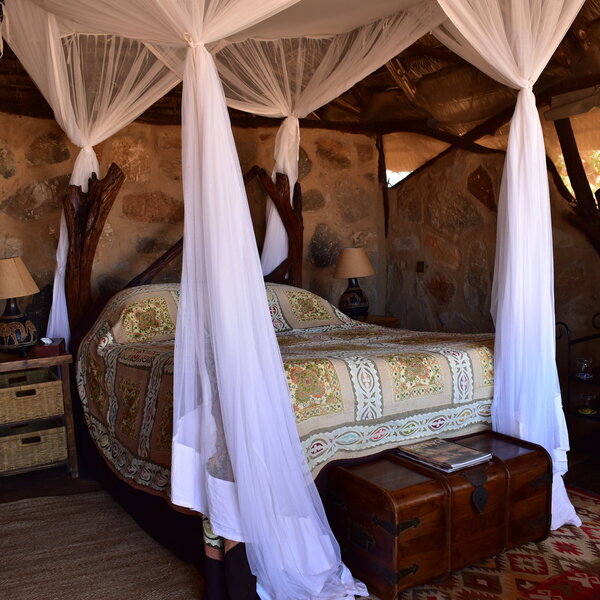
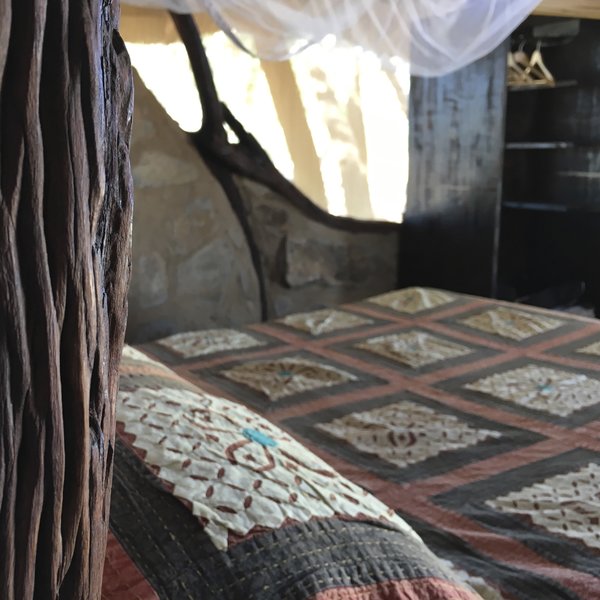
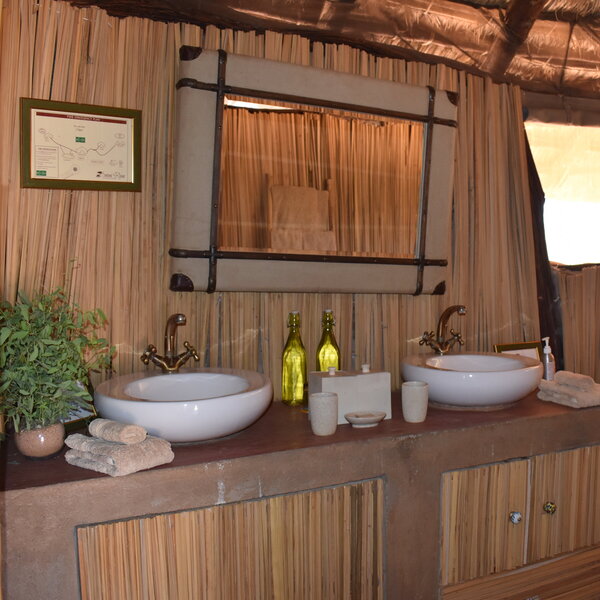
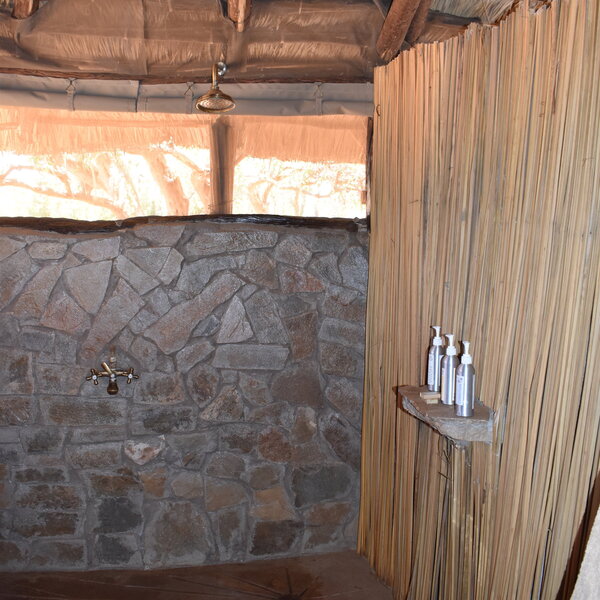
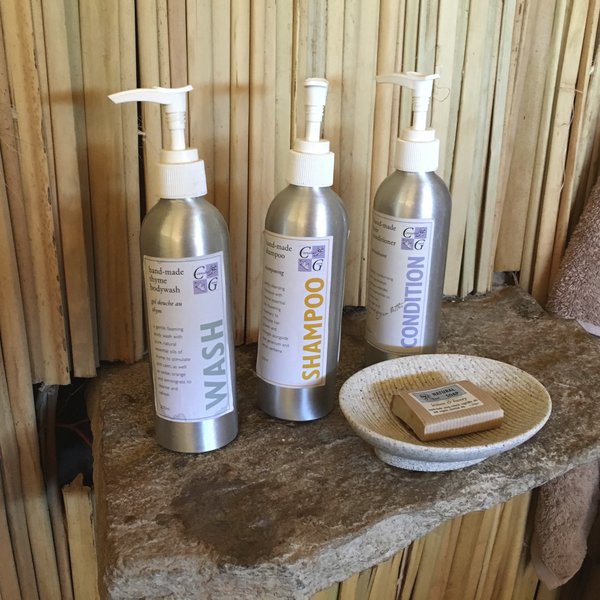
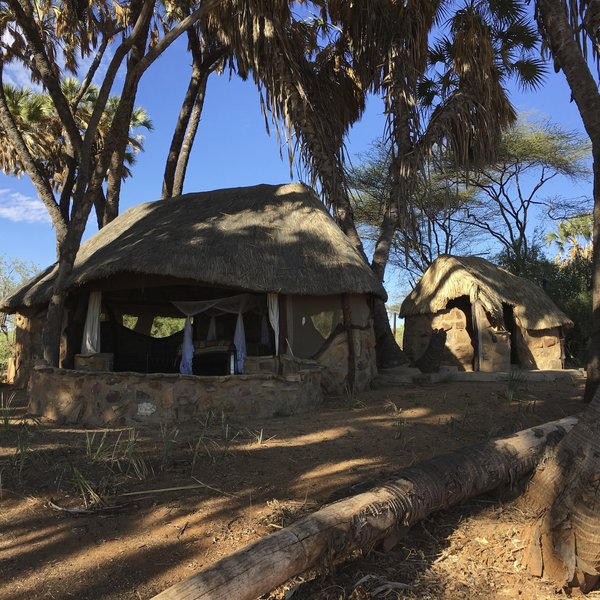

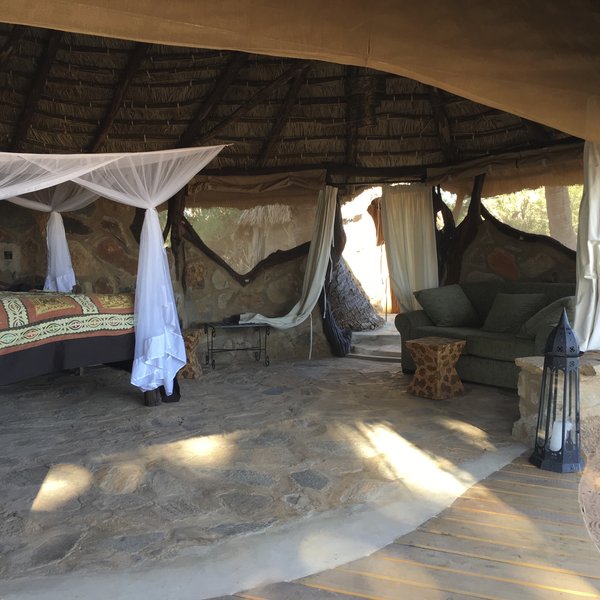
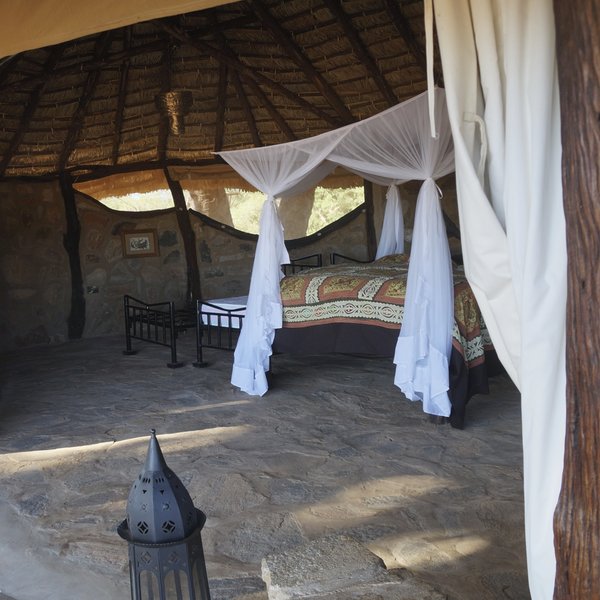
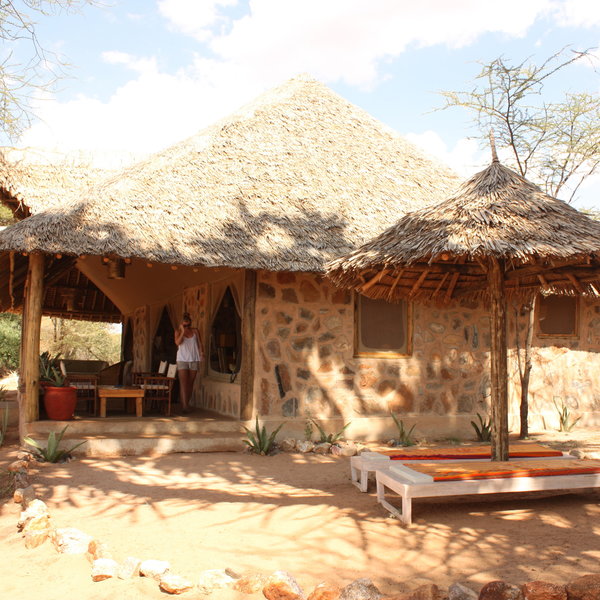


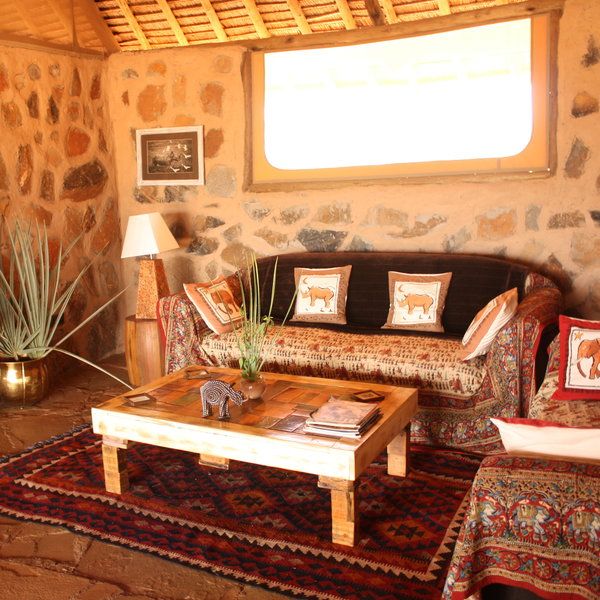

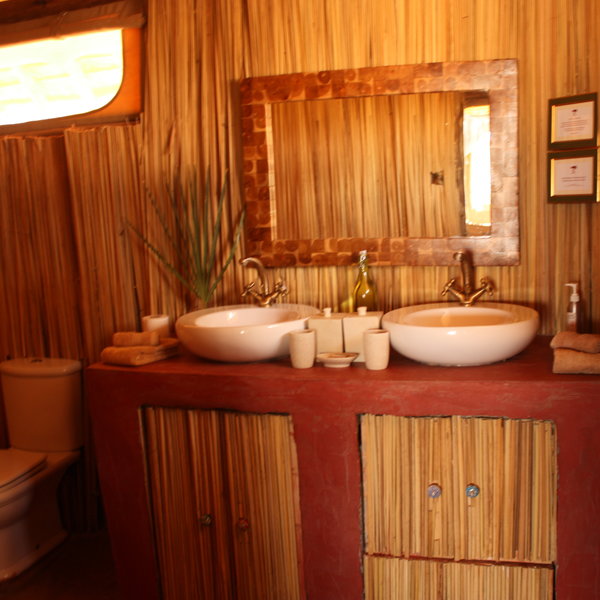
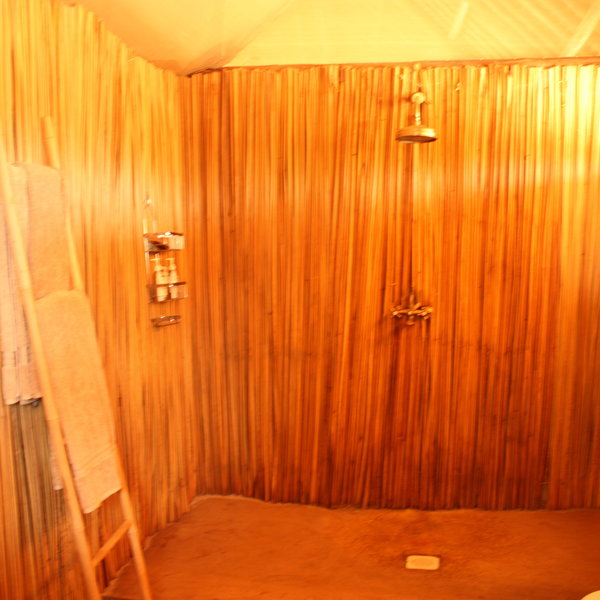
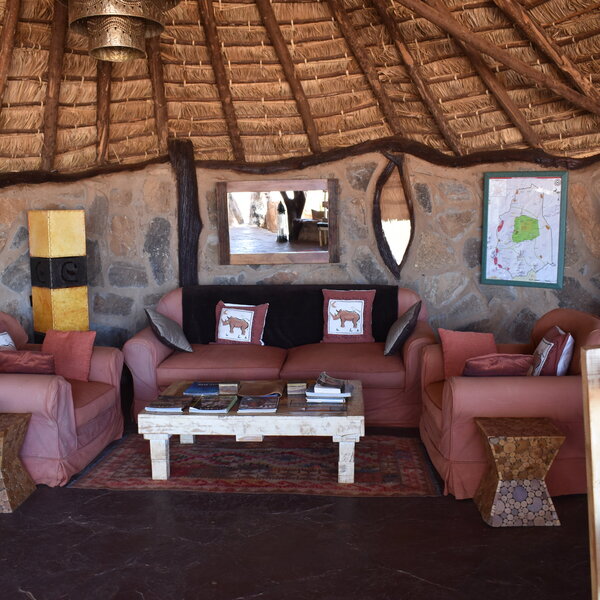
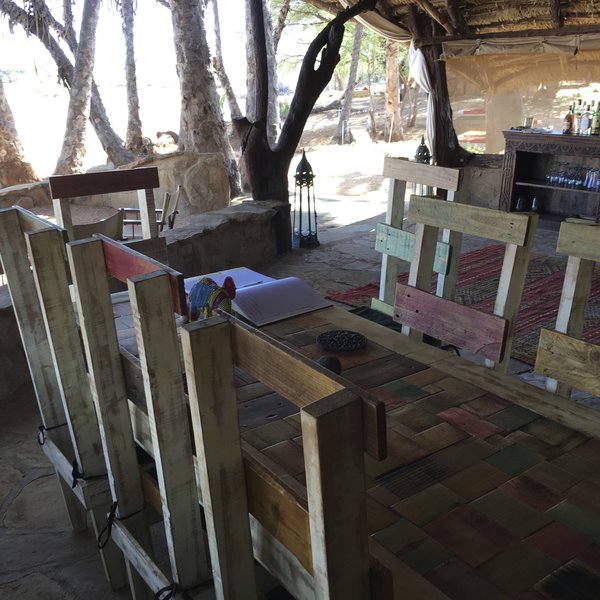

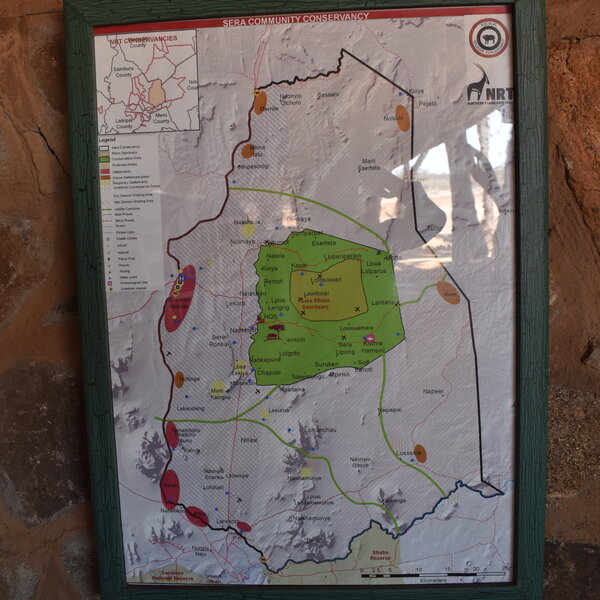
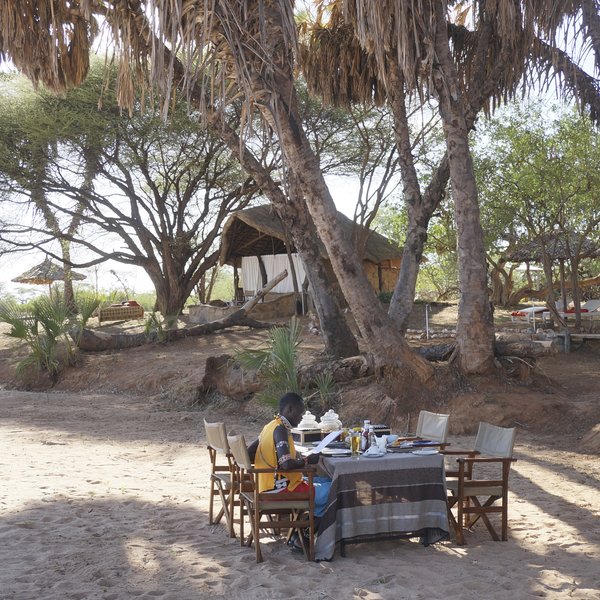
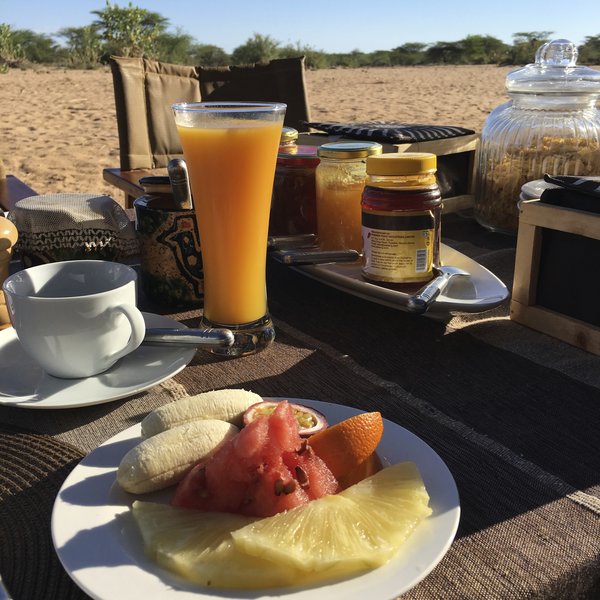
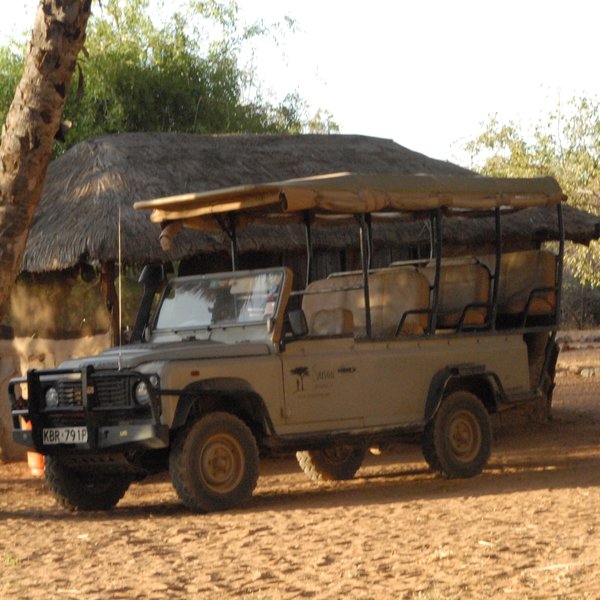
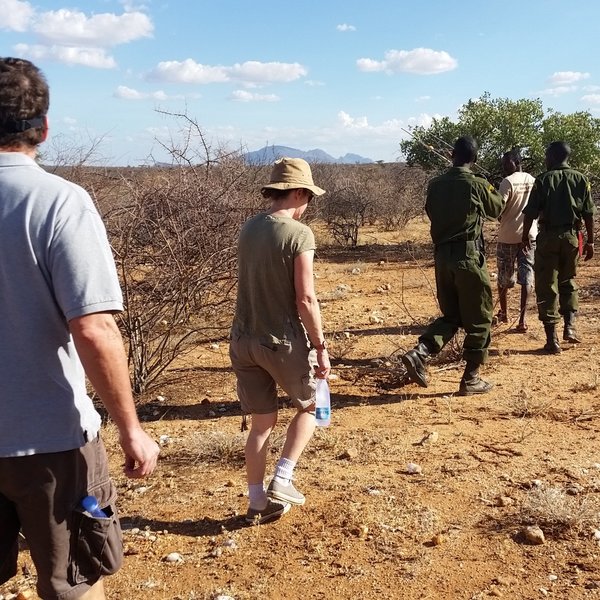
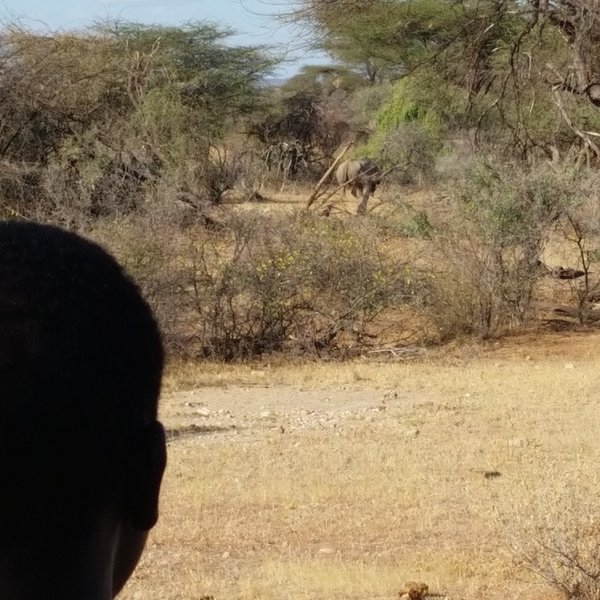
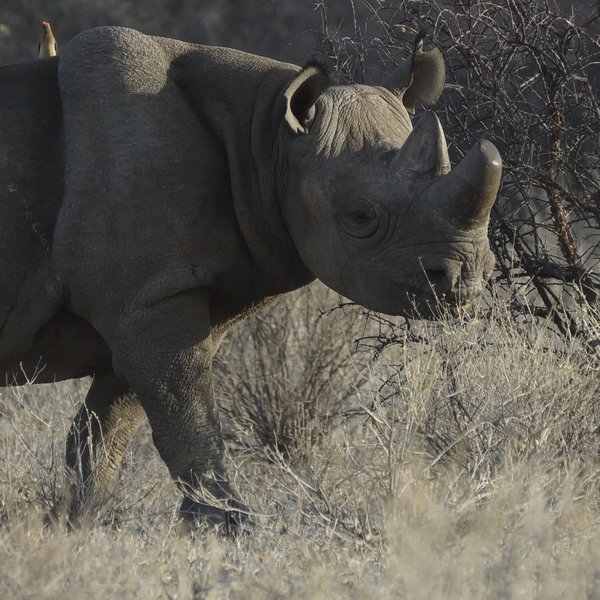
Expert Africa's gallery
When we travel we take lots of photos ourselves to give you a real and un-edited view of the safaris. See our 58 pictures and 1 videos of Saruni Rhino to get the candid view.
View gallerySafaris visiting Saruni Rhino
Just ideas, we'll always tailor-make a trip for you
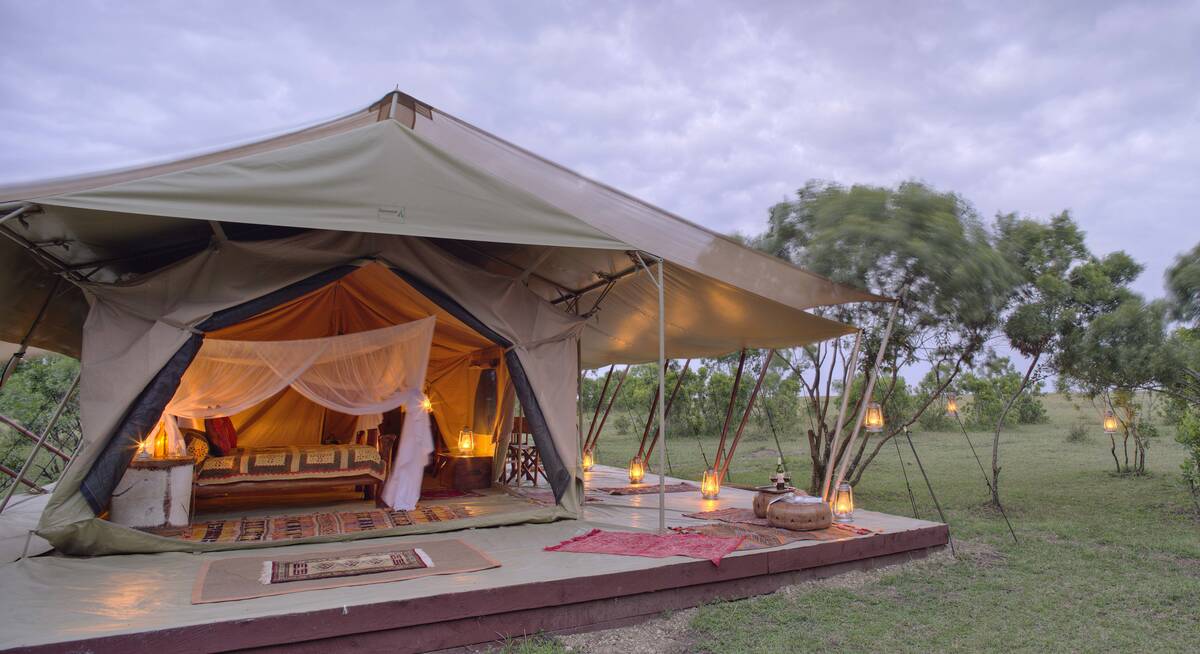
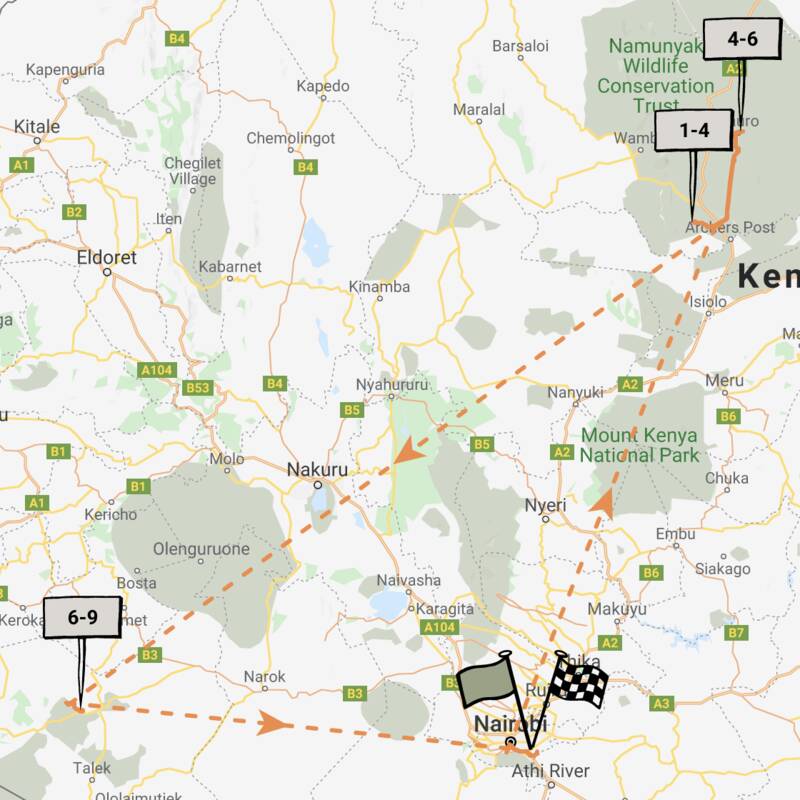
Lanner Falcon Fly-In Safari
8 days • 3 locations • 1 country
NAIROBI AIRPORT TO NAIROBI AIRPORT
Three sister camps offer access to wonderfully remote regions across northern Kenya and the Maasai Mara ecosystem. Enjoy an exclusive safari experience focused on great wildlife, superb guiding and considerable comfort, with a range of activities.
Visiting Samburu, Mara Conservancies and 1 other area
US$7,140 - US$8,400 per person
Saruni Rhino: Our full report
Saruni Rhino is an intimate three-room lodge inside the remote Sera Community Conservancy in northern Kenya.
Built between beautiful doum palms on the banks of the seasonal Kauro River, it opened in 2017 and is the first and only lodge in East Africa to offer safaris specifically focused on tracking the critically endangered black rhino on foot.
Saruni Rhino is the latest addition to the Saruni portfolio, which also include the excellent Saruni Mara, Saruni Wild and Saruni Samburu, to which it is very closely affiliated.
Just getting to Saruni Rhino is an adventure. Guests are driven either up the new Ethiopian highway and then east into the bush, or north-east along a dirt track. In either case, Saruni Rhino is about two hours drive from the Samburu National Reserve. As you drive through this very rural area of Kenya, you will see herds of cattle, goats and flocks of sheep, minded by semi-nomadic herdsmen. You'll also pass women walking miles to fetch water and children embarking on lengthy commutes to school. This gives a fascinating insight into the daily life and struggles of the Samburu people.
When you finally arrive at the lodge you are greeted by friendly staff who will offer you a refreshing drink and a very welcome cold towel. Saruni Rhino lies on the banks of the Kauro River, also referred to as a 'lugga' (which means dry riverbed). In front of the lodge is a permanent waterhole that is frequently visited by wildlife, including elephant, reticulated giraffe, impala, oryx and Grevy's zebra. When we stayed here in 2019 we were lucky enough to see a pack of wild dog here, coming for a morning drink.
A family banda (a family cottage with two ensuite bedrooms) was constructed in 2017, however despite this remains one of the smallest and most exclusive lodges in our Kenya programme, with a maximum occupancy of eight people.
The original two bandas, set either side of the main area, are very similar to one another: open at the front, with half stone walls on the sides and a thatched makuti roof. Although simply furnished, the bedrooms feel very homely, with particularly comfortable beds made of sturdy leadwood and covered by mosquito nets. Bright throws and rugs add colour to the rooms. The open-fronted rooms are designed to make the most of any night time breeze, (northern Kenya is usually quite hot), so electric fans are provided in each room.
Both bandas have a small veranda that overlooks the seasonal Kauro River. One has a hammock strung up between two palms, whilst the other has a day bed. This is a perfect place to relax and enjoy the wildlife that visits the river bed and water hole in front – although you'll need to watch out for any elephants that might walk past.
The main difference between the two bandas is the layout of the bathrooms. Both have a shower, basin, mirror and flush toilet, but in one the shower area is separated by a couple of metres from the bedroom, while the other has an en-suite at the back of the room. In line with the rest of the property, the bathrooms are not luxurious but they do possess a rustic charm.
Saruni Rhino's very comfortable family banda is located at the far end of the camp. As with the other two bandas, it is constructed of stone and makuti thatch and the open windows are covered with canvas gauze that can be zipped open during the day. A wide shaded veranda runs along the front with some comfy seating at one end and a rustic table and chairs at the other end with views toward the dry riverbed. Enter via a canvas door, which zips closed at night, into a comfortable lounge with two sofas around a coffee table and Persian rugs on the crazy paving floor. The two bedrooms lead off either side of the lounge. Each has a double bed, with brightly coloured bedspreads and cushions, and bedside tables with reading lamps. There is also space to hang clothes and store luggage. Behind each room is a spacious en-suite bathroom with reed walls. Double basins sit on top of a concrete vanity unit and there is also a flush toilet and large spacious open shower spanning the width of the room. Beside the family banda is a thatched sunshade with two sunloungers.
The main lounge and dining area at Saruni Rhino is similar in design to the bandas, with stone walls on three sides, a high thatched makuti roof and an open front. Again, the décor is understated but very pleasant, and furniture runs to a few sofas, a drinks cabinet and a dining table. Bright rhino artwork adds a splash of colour. This is where meals may be served when the weather doesn't permit dining in the dry riverbed.
A swimming pool has recently been added to Saruni Rhino which is very welcome in the northern Kenyan heat.
However, to talk at length about the design of Saruni Rhino would be missing the point. The reason guests visit is for the rhino encounters in the Sera Rhino Sanctuary – which are oustanding.
The 3,450km2 Sera Community Conservancy was set up in 2000 by the local community to protect the elephants which, at the time, were being badly poached. Their work has proved extremely successful and, in May 2015, ten black rhinos were re-introduced to this area, several of these have since had calves, bringing the population to 15 black rhinos as of 2019. This is the first time in more than 30 years that rhino have been able to return to their natural habitat in northern Kenya. Sera is also the only community conservancy in Africa to own and operate a sanctuary dedicated to the conservation of the black rhino, and money from every guest staying at the lodge goes straight into helping conserve these critically endangered animals.
The rhinos live in the heart of Sera, in a 107km2 fenced sanctuary that's about a half-hour drive from the lodge. When the project was started each rhino had a radio transmitter inserted into their horns, which helped the rangers to keep daily tabs on all animals. Over time the batteries in the transmitters have died and the rangers have reverted to traditional methods of tracking, looking for spoors and signs to locate the rhinos.
Each walk is led by an expert tracker as well as a highly trained guide from Saruni, and conservancy rangers follow behind the group to ensure that the walks are carried out safely.
It's important to note that whilst one ranger will be armed, you are likely to come reasonably close to the rhinos, so it is imperative that everyone does exactly as they are told. The guides are well trained in the best ways to move through the bush unnoticed, but if the rhinos suspect your presence, you will have to back away and leave them in peace.
Using termite mounds and fallen trees as cover, and the principle of always have a bush or other object to slip behind should the need ever arise, you approach an identified rhino on foot, with infinite patience and as silently as possible. You need to stay downwind and move with extreme care through the bush to remain undetected. A rhino's hearing is so acute that even the sound of a camera shutter is enough to alert them to your presence. However, their eyesight is very poor and thus with the trackers' help you can get remarkably close to these incredible animals, often given away by their noisy munching on the bushes.
Rhino-tracking is usually done in the afternoon, when the rhinos are most active. When we visited in 2019 we went on an afternoon trek to locate a large male who had previously been spotted a few hundred meters from the road. After a thorough safety briefing from our guide we slowly moved through the bush, reaching a large rock below which we could just make out the rhino resting in the shade. Remaining calm and quiet, we were able to approach within 15 meters of him where we were able to watch as he ate from a thorn bush. It was an incredible experience to be so close to a wild black rhino, knowing how elusive they can be and how rare they are across Africa. We also thought the guiding was first-rate.
We then continued our journey to meet up with two of the rangers whose sole job it is to look after a young black rhino, ‘Loijupu’, who is the process of being released into the wild in the Conservancy. After being abandoned by his mother he was initially looked after at the nearby Reteti Elephant Orphanage and when we visited in 2019 he still needed constant monitoring. He is still used to people, and reliant on regular feeds, however over time they hope to see him become increasingly independent.
Rhino-tracking is usually done in the afternoon, when the rhinos are most active. In the morning guests might want to experience one of Saruni Rhino's other activities:
The singing wells are a short drive away and well worth visiting. In an ancient tradition that few tourists have witnessed, Samburu pastoralists sing rhythmically to their cattle, encouraging them to drink from the wells. At other nearby waterholes it's also possible to see another amazing spectacle: hundreds of sandgrouse flying miles to collect water in their specially adapted feathers, before flying back to their nests where their chicks lie in wait for a drink. Guests may also visit Reteti Elephant Sanctuary in Namunyak Wildlife Conservancy, which is about two hours drive away. Here, orphaned elephant calves are hand reared before being released back into the wild. The young rhino we saw in the conservancy had just been released from here.
Activities
4WD Safari
Birdwatching
Cultural excursion
Elephant encounter
Guided walking safari
Private activities
Families & children
- Attitude towards children
- Saruni Rhino does not accept children under the age of 16.
- Property’s age restrictions
- Minimum age 16
- Special activities & services
- There are no special activities for children.
- Equipment
- None.
- Generally recommended for children
- Saruni Rhino is better suited for adults, as the primary reason for staying here is to track the rhinos.
- Notes
- The camp is unfenced and big game frequently walks through camp, so children need to be under constant supervision.
Food & drink
- Usual board basis
- Full Board & Activities
- Food quality
- When we stayed at Saruni Rhino in 2019 we thought the food here was good. The dining is comparable to that of its sister property Saruni Samburu, with an emphasis on Italian cuisine and plenty of fresh ingredients.
For breakfast you can expect fresh fruit, cereal, eggs, sausages and bacon. To drink, there is tea, coffee and juice.
For lunch we had cold gazpacho soup served with freshly baked focaccia bread. This was followed by grilled red snapper with a lemon dressing, avocado and a chickpea & mango salad. Desert was fresh tropical fruits.
Dinner is often served under the stars in the dry riverbed in front of camp, which we loved. When we stayed in 2019 this was a heavier three-course meal, with a starter of pesto tagliatelle topped with parmigiano cheese, followed by tilapia fish, honey glazed carrots and green beans. Desert was a tasty caramelized pineapple. - Dining style
- Group Meals
- Dining locations
- Indoor and Outdoor Dining
- Further dining info, including room service
- On request
- Drinks included
- includes most drinks apart from Champagne and specially imported wines and spirits.
Bottled drinking water is also provided.
Our travellers’ wildlife sightings from Saruni Rhino
Since mid-2018, many of our travellers who stayed at Saruni Rhino have kindly recorded their wildlife sightings and shared them with us. The results are below. Click an animal to see more, and here to see more on our methodology.

100% success

100% success

100% success

100% success

0% success

0% success

0% success

0% success

0% success

0% success

0% success

0% success

0% success

0% success

0% success

0% success
Getting there
- Location
- Northern Kenya, Kenya
- Ideal length of stay
- At least two nights to experience the amazing activities on offer.
- Directions
- It is about 2 hours by road from the sister camp Saruni Samburu and from Kalama Airstrip.
- Accessible by
- Fly-and-Transfer
Special interests
- Walking safaris
- This camp offers walking safaris into the heart of the Sera Conservancy, where expert trackers seek out elusive black rhinos, accompanied by highly trained guides and conservancy rangers. It’s a unique opportunity for a close encounter on foot.
- See ideas for Walking safaris in Kenya
Sustainability
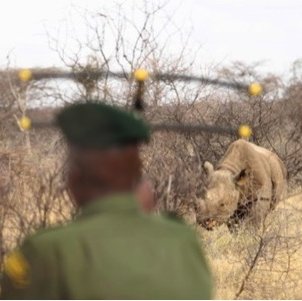
Rescuing the giants of the Sera Conservancy
Located in Sera Conservancy, in the undiscovered northern frontier of Kenya, the intimate and innovative Saruni Rhino camp is a 2 hours’ drive away from Kalama Conservancy. Surrounding the Samburu National Reserve, the eco design minimises the lodge’s negative impact on the environment. The lodge is built under a dry river bed allowing the indoor temperature in to be tolerable all year-round. The rooms are open fronted maximizing air circulation in hot climate and are built from local rock and stones found in the nearby area. The lodge uses solar power and informs guests on arrival about the importance of conserving power and water to avoid energy waste.
In February 2017, they expanded from lodges and opened Saruni Rhino Sanctuary. Saruni Rhino offers the first community conservancy dedicated to the conservation of the critically endangered black rhino. with this they could protect 30 of its kind. The sanctuary offers guests the once-in-a-lifetime experience of a walking safari tracking black rhinos on foot, accompanied by an expert Saruni guide and a highly-trained Sera Community Conservancy ranger.
Guests can also opt for ‘up close and personal’ encounters with ‘the supreme rhino of Sera’ or game drives to spot the Samburu specials (oryx, gerenuk, ostrich, Grevy’s Zebra, reticulated giraffe), buffalo, elephants, antelope and a plethora of birdlife.
Finally, conservation initiatives are being developed at the recently opened The Reteti Elephant Sanctuary in Namunyak Wildlife Conservancy. Here, visitors can observe and interact with orphaned and abandoned elephant calves. The aim of the new Sanctuary is to help animals readapt to the surrounding wild herds.
See more great sustainability projects in Kenya
Communications
- Power supply notes
- There is power available 24 hours a day, and guests can charge their batteries in their rooms, however there is not sufficient power for hairdryers etc. There is a backup generator.
- Communications
- There is WiFi in the main area.
- TV & radio
- There is no TV.
- Water supply
- Borehole
- Water supply notes
- There are flush toilets, and plumbed in showers. Bottled drinking water is also provided.
Health & safety
- Malarial protection recommended
- Yes
- Medical care
- There are first aid kits in the main area and in the vehicles and the staff are trained in how to use these.
- Dangerous animals
- High Risk
- Security measures
- Askaris patrol the property day and night, and escort guests back to their rooms after dinner.
- Fire safety
- There is a fire extinguisher in the kitchen.
Useful info
- Disabled access
- Not Possible
- Laundry facilities
- Laundry is taken to Saruni Samburu, so while it is included in the rates at Saruni Rhino, it may be better to have this done at the main camp, or to wait until you get to a different lodge.
- Money
- There is a safe in the kitchen.
- Accepted payment on location
- There is nothing to pay for at Saruni Rhino – but if you want to tip then cash in USD or Kenyan Shillings is preferred.
Plan and book your trip with Expert Africa
All of our trips are tailor-made, so we'll always adapt them to suit you. Talk to an Expert and let us plan and arrange your perfect trip.

Talk to an Expert
Call or email us now! We’ll match you with the Specialist in our team who is best suited to help you. Then together we can start planning your trip.

Set up your itinerary
Based on our experience and your ideas, your specialist will create a detailed, costed itinerary. We’ll refine it together, until we have a trip that you’re perfectly happy with.

Prepare for your trip
The same Specialist will make the seamless arrangements for your trip, send you detailed travel documents, and be available to answer any questions before you depart.

Travel with peace of mind
After you set off, you’ll be cared for by our partners in Africa, most of whom have worked with Expert Africa for decades. And if you ever need us urgently, we’re available 24/7.

When you return
We love to learn about your trip, and so will always be grateful if you’ve the time to give feedback to your Specialist when you return.
Saruni Rhino's location
Look closer at the environment and surroundings of Saruni Rhino.
Excursions from Saruni Rhino
Optional extra day-trips and excursions possible whilst you're staying at Saruni Rhino. Talk to us: these are usually best arranged before you go.
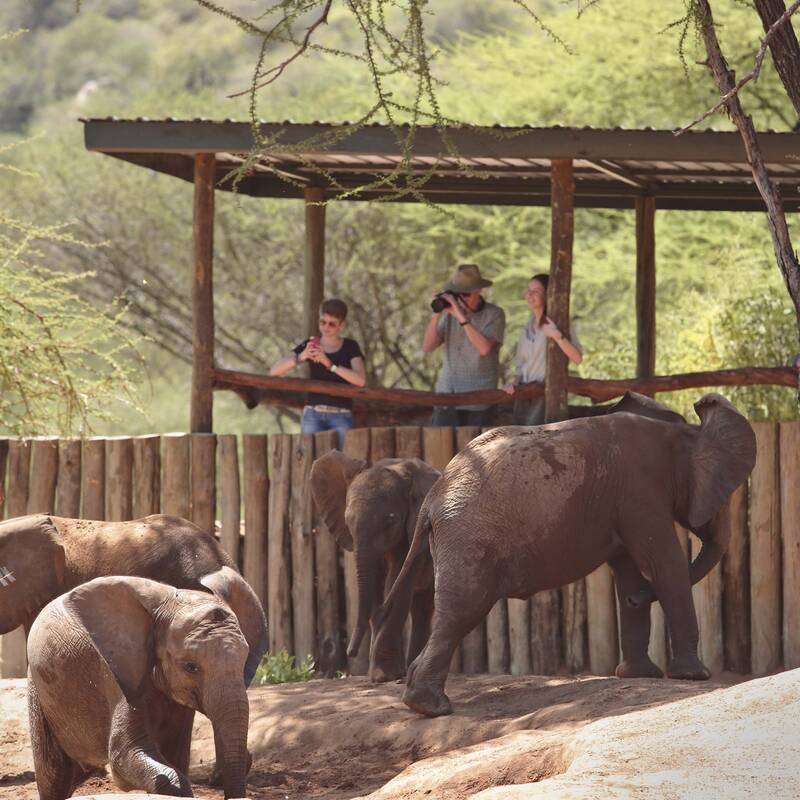
Reteti Elephant Orphanage visit
One-and-a-half hours, plus transfers
Visit the community-run Reteti Elephant Sanctuary in Samburu, for an intimate experience meeting the orphaned baby elephants who have been rescued from the surrounding regions. They are hand-reared by Samburu keepers, until they are ready to be released back into the wild.
More about Reteti Elephant OrphansOther lodges in Northern Kenya
Alternative places to stay in this same area.
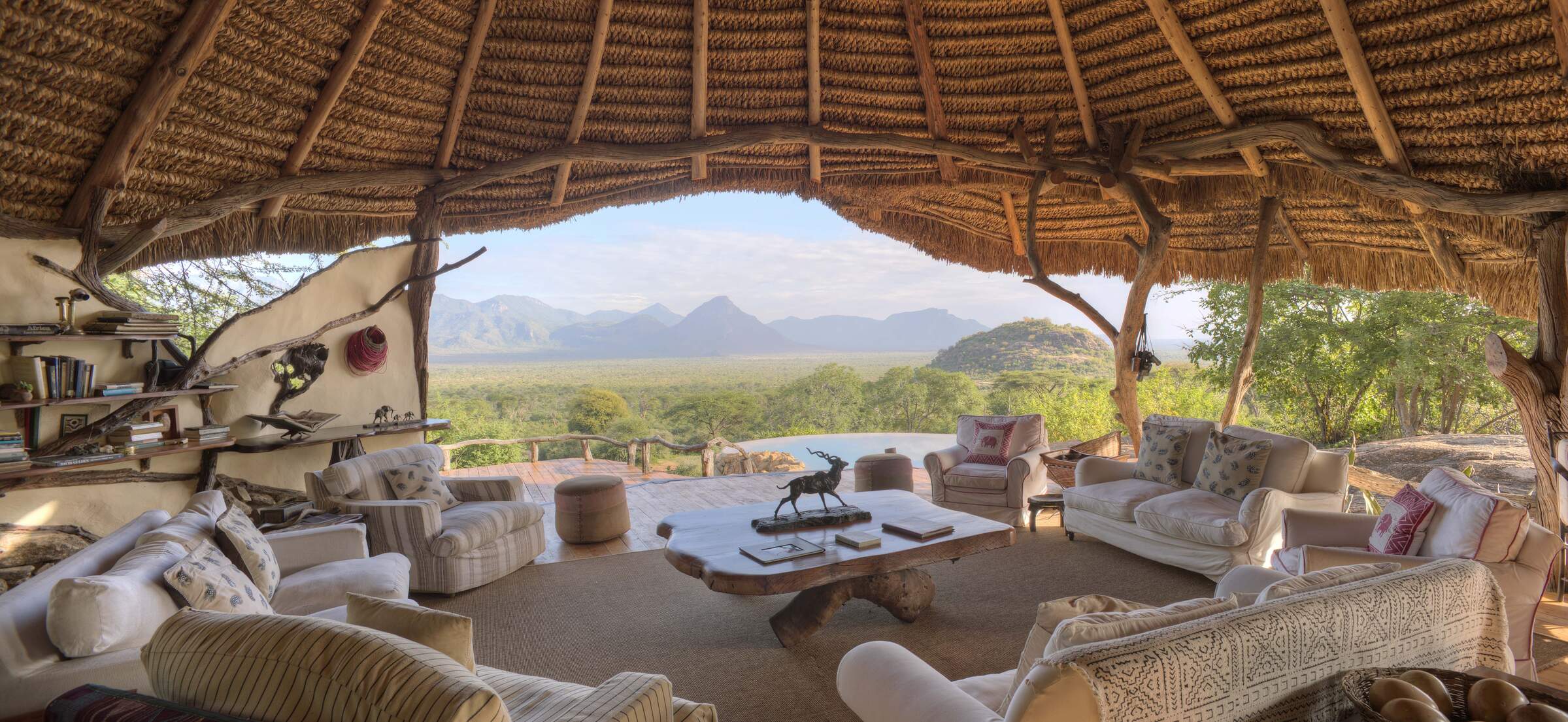
Sarara
Sarara is an outstanding safari lodge, with access to a vast wilderness region. Walks, drives and cultural experiences are on offer, all with very good guides.
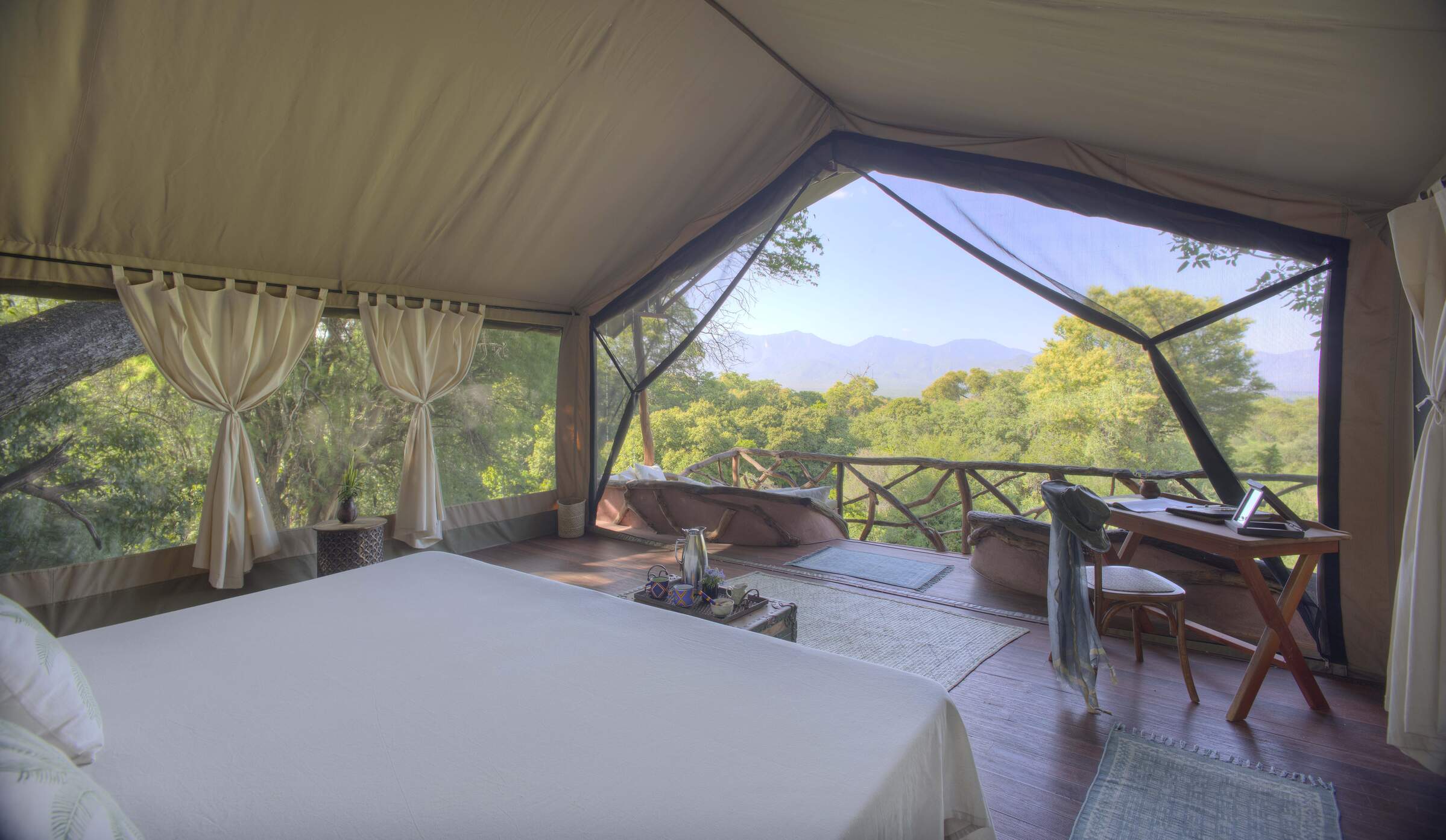
Sarara Treehouses
Sarara Treehouses is a luxurious camp with tents raised up in the forest canopy. Come here for the wildlife, walking and cultural activities, accompanied by excellent local guides.
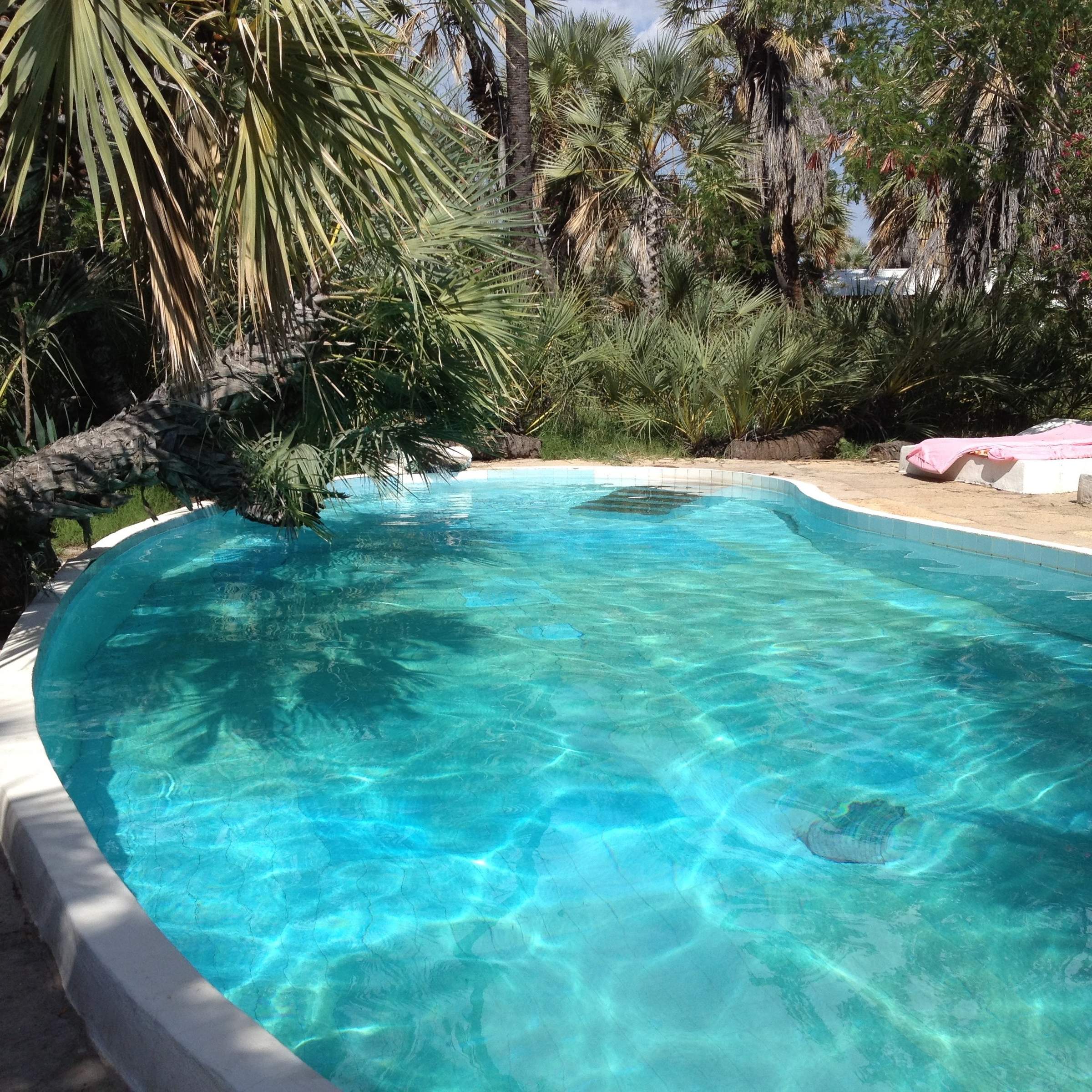
Oasis Lodge
Oasis Lodge is a basic hotel for adventurous travellers near the east shore of Lake Turkana.
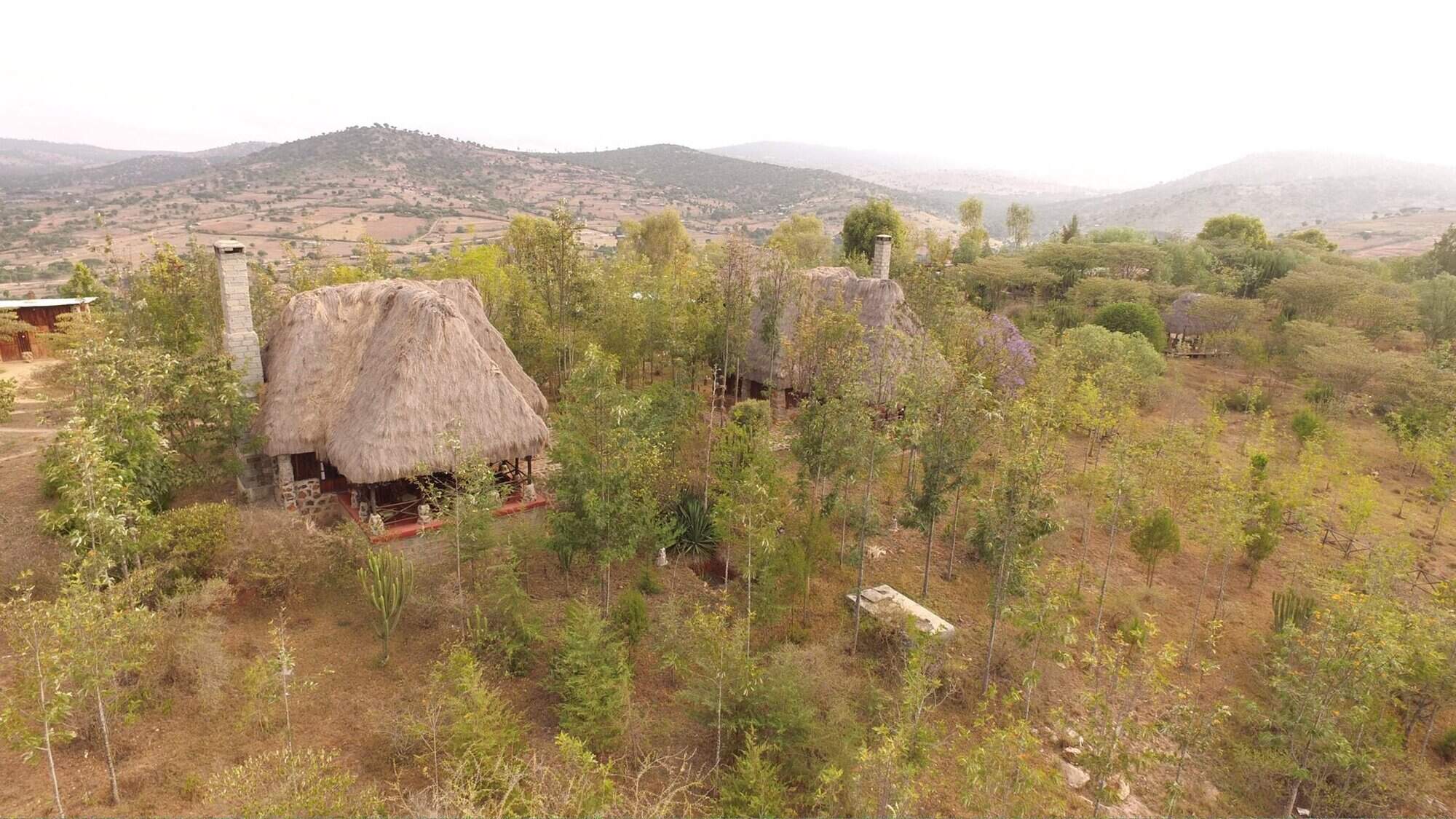
Ngari Hill Ecolodge
The 6-room Ngari Hill Ecolodge is the only full-service lodge in Maralal and makes a convenient overnight stay en route from Nairobi to Lake Turkana.
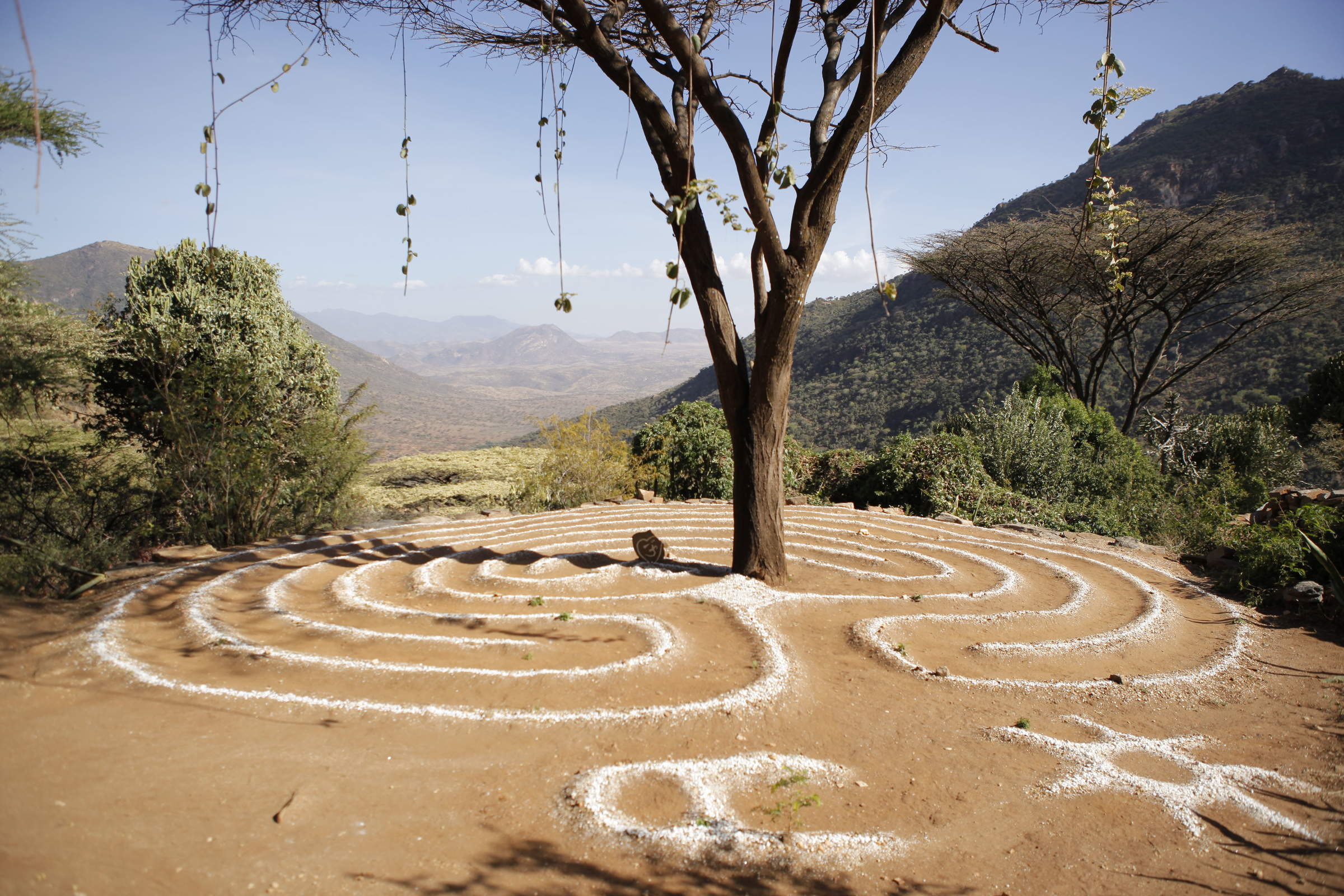
Desert Rose
This small, unique mountain lodge – Kenya’s northernmost luxury accommodation – is set amid the towering landscapes of Mount Nyiru, and is a superb place for rest and relaxation.
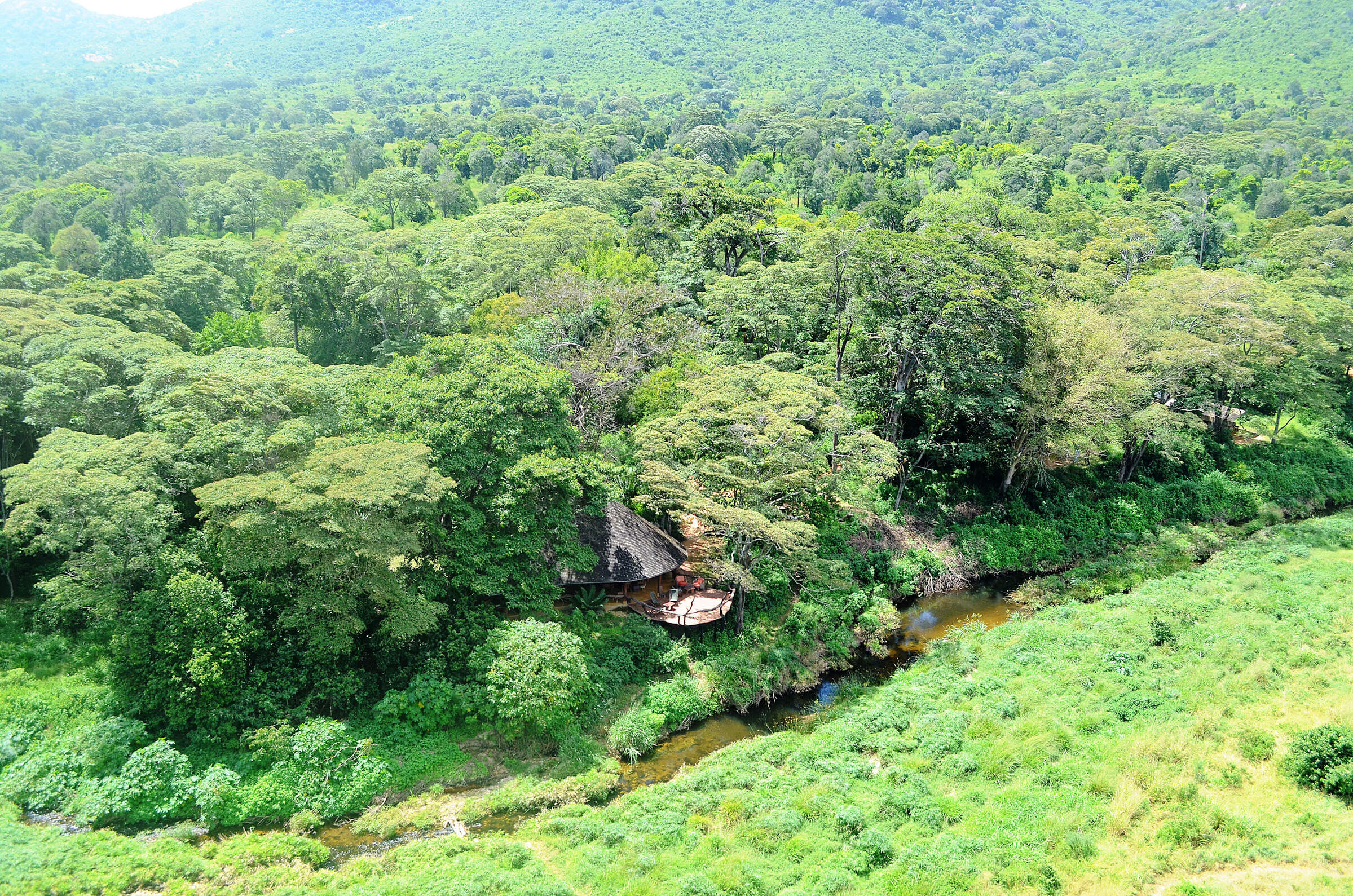
Kitich Forest Camp
Kitich Forest Camp is one of Kenya's most established, remote highland forest camps, offering exciting bush walks and close encounters with big game as well as insects and birdlife.
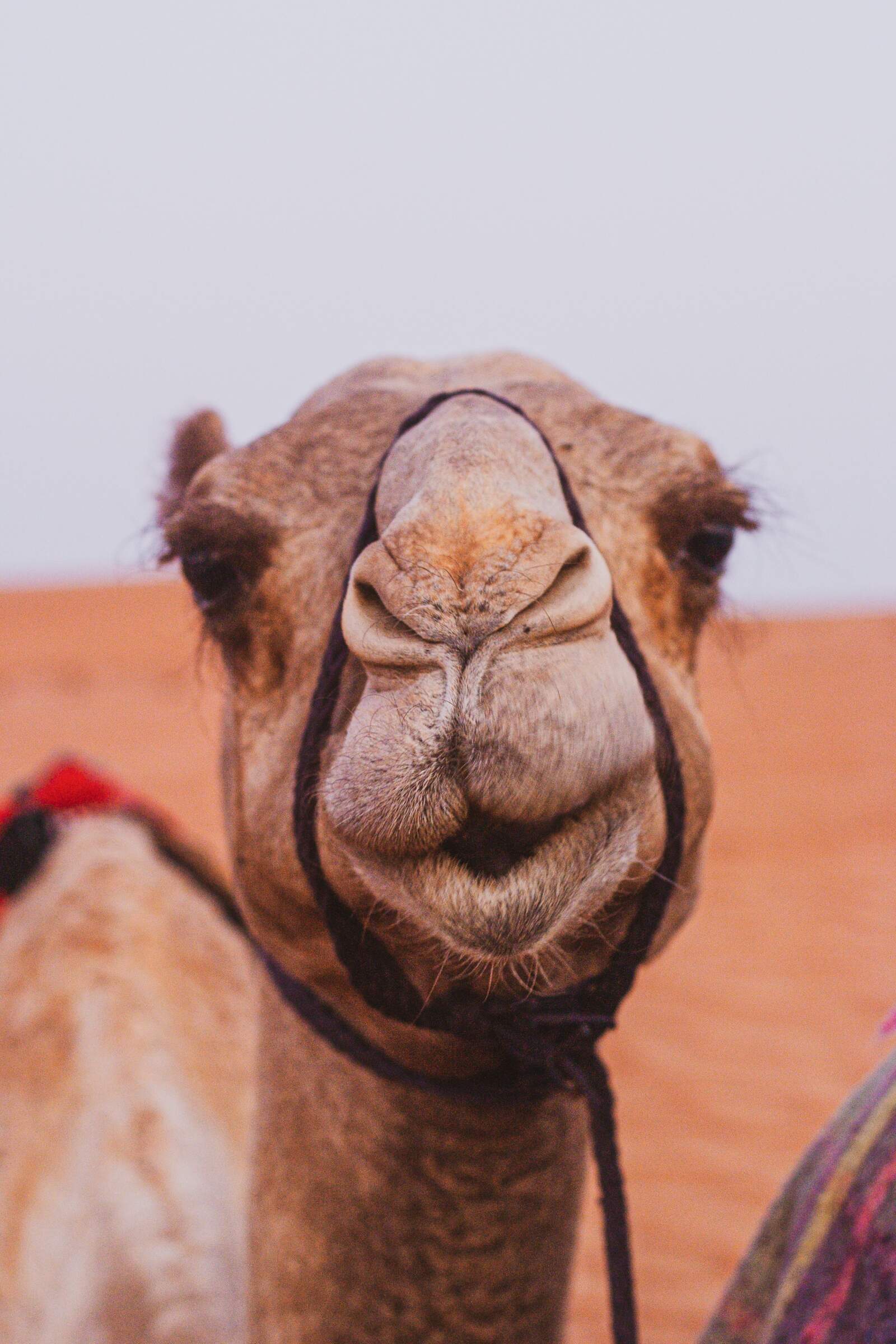
Wild Frontiers
Wild Frontiers Camel treks are based in the Milgis River area and run in various parts of northern Kenya between Lake Turkana and Laikipia.
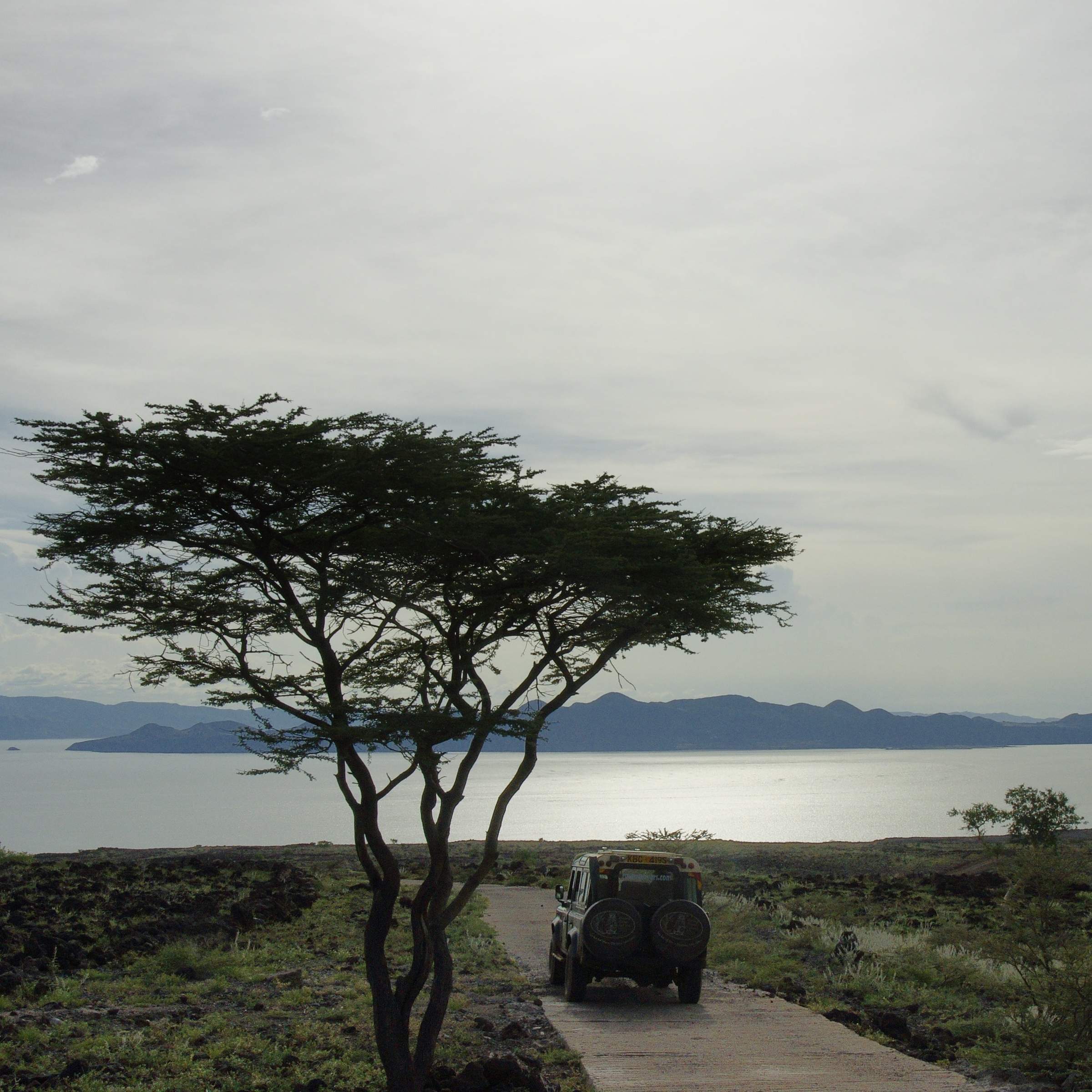
Palm Shade Camp
Palm Shade Camp is a simple camp for adventurous travellers near the east shore of Lake Turkana.
When to go to Northern Kenya
Our month by month guide: What it's like to visit Saruni Rhino in Northern Kenya
Jan
Feb
Mar
Apr
May
Jun
Jul
Aug
Sep
Oct
Nov
Dec
Kenya in January
Clear, hot days and warm nights make this high season a popular time for safaris and it’s also good for diving and snorkelling as water clarity is excellent and gets better as the dry season progresses. Most lodges and tented camps treat January after the New Year week is over, as mid-season, making it a good compromise in terms of value for money with reasonably reliable, dry weather and some greenery left in the landscape.
Expert Africa bases its description of climate and weather in January, like the other months of the year, on the climate records of roughly the last 100 years, and it's fair to say that the weather and seasons since the beginning of this century have been highly irregular and unpredictable.
- On average, January is the second driest month of the year
- Elephants dig waterholes in the dry riverbed in the Samburu reserve.
- Wildebeest and many antelope have their calving season, to February.
- Migrant birds are seen in huge numbers, especially in the Rift Valley.
- Sea water clarity around the coral reefs generally good.
Our view
Fantastic: the very best time to visit
Weather in January
Kenya in February
With the short dry season well established, the grass grazed down and wildlife gathering close to water points, this is still a good time for a safari. Good water clarity in the Indian Ocean's coastal waters makes for excellent diving and snorkelling conditions.
Expert Africa bases its description of climate and weather in February, like the other months of the year, on the climate records of roughly the last 100 years, and it's fair to say that the weather and seasons since the beginning of this century have been highly irregular and unpredictable.
- On average, February is the driest month of the year.
- It’s sometimes possible to swim with whale sharks at Diani Beach.
- Migrant birds are still seen everywhere, especially near water.
- This is usually peak calving season for wildebeest and many antelopes.
- This month is often the hottest of the year, especially on the coast.
Our view
A very good time to visit
Weather in February
Kenya in March
Hot, increasingly humid weather – with good diving and snorkelling conditions at the start of the month – gives way to rains and lower accommodation costs. Expert Africa bases its description of climate and weather in March, like the other months of the year, on the climate records of roughly the last 100 years, and predicting the seasons since the beginning of this century has been difficult.
March is the month when – traditionally – intensely hot conditions build up until a cloudburst finally happens at the end of the month or in early April, to relieve the humidity. As ever, regional variations across the country can greatly impact on visitors' experiences.
- Sea-water clarity is best for diving before the long rains start.
- Visitor numbers are low, though the Easter holidays can be busier.
- Night skies can be scintillatingly clear in early March.
- Cropped down savannah grasses can make it easier to see the wildlife.
- Temperartures climb high, especially at lower elevations.
Our view
A good time to visit, with pros & cons
Weather in March
Kenya in April
April sees the full onset of the southeast monsoon wind or kusi, which heralds the long rains. Temperatures drop soon after the rains are established and you’ll often have facilities largely to yourself in this more affordable low season, sometimes known as the "green season". The bush quickly springs to life, with greenery sprouting almost before your eyes. While you're likely to get a fair number of heavy showers, the breaks in the rain can yield sparklingly clear conditions.
With the dust settled and bright sun piercing the clouds, conditions can be sublime for photography, especially first thing in the morning or in the late afternoon with another storm brewing. You may be lucky, or you may find conditions very wet and muddy.
- A wet month, the coast often gets more than 300mm (12in) of rain.
- Sunny spells can provide great light for photography.
- Buffalo and zebra calving season often happens in this month.
- Baby crocodiles hatch, for example on Central Island in Lake Turkana.
- Palearctic migrant birds gather to fly north to breeding grounds.
Our view
A time to avoid if possible
Weather in April
Kenya in May
While game viewing can be trickier as vegetation runs riot, between the cloudbursts the colours and light are great for photography at this time of year. Expert Africa bases its description of climate and weather in May, like the other months of the year, on the climate records of roughly the last 100 years, and while it's reasonable to expect heavy rains in many parts during this month, especially on the coast, the rains don't always come evenly or in some areas come at all.
In an El Niño year, the so-called long rains that normally are established across much of the country by May can be meagre, to the despair of farmers. On the other hand in a La Niña year, the long rains can bring floods. On the coast, the monsoon winds make the climate much more predictable, with heavy rains common throughout this month.
- Frogs breed in the ponds in the Arabuko Sokoke Forest near Watamu.
- Wildebeest, impala and other grazers are in rut (the breeding season).
- Kilimanjaro looks its best as heavy rain falls as snow on the summit.
- There's a sharp peek of rainfall on the coast with many rainy days.
- Accommodation prices are uniformly low, while some camps close.
Our view
A time to avoid if possible
Weather in May
Kenya in June
The rains give way to cloudy, cooler weather, often making for comfortable conditions by the end of the month, especially in the highlands. Starting from mid-June or the beginning of July and running until the end of October, this is the high season, and accordingly has higher accommodation rates and – at least until early September – higher numbers of visitors.
While the early part of June can often be rainy on the coast, it can be a great time to go on safari, with fresh greenery, many young animals and good photographic conditions with clear air.
- The Taru Desert, inland from the coast, is carpeted with flowers.
- The Lake Turkana Cultural Festival is held in Loiyangalani.
- Madaraka Day (commemorating self rule) is 1 June.
- The annual Lewa marathon runs a course through the wildlife.
- The Diani Rules "sports" event rips up the rulebook at Diani Beach.
Our view
A good time to visit, with pros & cons
Weather in June
Kenya in July
Kenya’s “winter" season sets in (winter is a misnomer but locals feel the change), and the highlands can be rather grey. Skies are often cloudy and the days can be surprisingly cool, with an average daytime high in many highland safari areas of 15-20°C and night-time temperatures dropping below 10°C in Nairobi and the highlands. Lower parts of the country and the coast are usually warm and dry, typically reaching highs of around 25°C with lows in the high teens.
As this is the start of the high season, coinciding with the usual arrival of the wildebeest migration in the Maasai Mara, July is a busy month. Ask your Expert Africa specialist to advise on how to avoid the crowds, which is not that difficult to do.
- The wildebeest migration usually reaches the Maasai Mara in July.
- Simbi Lake (Kisumu) and Crater Lake (Naivasha) can attract flamingoes.
- Watersports start to pick up and some surfing is possible at Malindi.
- Afternoon thunderstorms are a common feature in the Maasai Mara.
- The sea can be choppy along the coast, making diving difficult.
Our view
A good time to visit, with pros & cons
Weather in July
Kenya in August
The Great Migration fills the plains of the Maasai Mara, and school’s out, so the park roads are full of tourists – ask your Expert Africa specialist for advice on crowd avoidance tactics. Choose a private conservancy rather than a public national park or national reserve for quieter conditions.
Like July, August is generally mild and relatively dry in the safari areas, but it can be very chilly in the highlands, even in the middle of the day, and hail occasionally falls above altitudes of around 2,400m (8,000ft). Nairobi can be disappointingly overcast, with low cloud.
- Apart from Christmas holidays, this is the busiest month of the year.
- Late August sees peak wildebeest drama at the Mara River crossings.
- Coastal winds are good for kite- and wind-surfing.
- Few mosquitoes are around at this generally dry time of year.
- The annual Camel Derby takes place in the Samburu capital, Maralal.
Our view
A good time to visit, with pros & cons
Weather in August
Kenya in September
The skies clearing of cloud signals the start of hot, dry weather with little chance of rain – and, after the first few days of the month, far fewer visitors – making the latter part of September a good time for a quieter safari. While early September is often good for dramatic migration crossings along the Mara River, you might consider deliberately postponing your trip until later in the month, when the migration can still be very impressive and visitor numbers fewer.
If tourist surges are somewhat predictable, however, the patterns of the wildebeest migration are more volatile, and like all of Expert Africa's climate and weather assessments, they are based on accumulated years of experience rather than guaranteed certainty.
- This is still high season, with prices to match.
- Many river crossings take place on the Mara river in both directions.
- Natural bush fires flush out insects and small animals for predators.
- The Rift Valley Music Festival takes place by Lake Naivasha.
- With school holidays over by early September, late-month is quieter.
Our view
Fantastic: the very best time to visit
Weather in September
Kenya in October
Still hot, mostly dry and not too busy, this is many people’s preferred month for a safari, and it’s also good for diving and snorkelling. The wildebeest and zebra herds of the great migration are often still to be seen, though in dwindling numbers. The swamps of Amboseli attract thirsty wildlife including large herds of elephants.
While we wouldn't expect much rain across most of the country this month, the climate has become so unpredictable that you can never say never, and the possibiity of the short rains – usually associated with November to mid-December, starting early, can't be discounted.
- This month sees the tail end of the great migration in the Mara.
- Palearctic migrant birds start to arrive, staying until March.
- Turtle nests hatch at Watamu, until November.
- Amboseli elephants focus on the swamps for their daily water.
- The Indian Ocean monsoon winds turn from southeast to northeast.
Our view
A very good time to visit
Weather in October
Kenya in November
The northeast monsoon wind or kaskazi heralds the start of the “short rains", usually some time in the second half of the month. From November to mid-December, this is the low season, and accordingly has lower accommodation rates and lower visitor numbers. Across most of the country you can expect warm, somewhat cloudy weather, with occasional heavy showers and localised flooding.
Expert Africa bases its description of the climate in November, like the other months of the year, on the records of roughly the last 100 years, and it's fair to say that the seasons since the beginning of this century have been highly irregular and unpredictable: some years the short rains don't come at all, or don't reach every part of the country. In an El Niño year, the November short rains can be very heavy, but in a La Niña year, they can fail completely.
- Swimming with dolphins in Lamu can be done from now until April.
- Birders gather at Ngulia in Tsavo West to ring Palearctic migrants.
- The Lamu Cultural Festival takes over the town and Lamu Creek.
- Agricultural shows often take place regional market towns.
- This is low season, so camps can be great value, with special offers.
Our view
A good time to visit, with pros & cons
Weather in November
Kenya in December
In a typical December, the rains usually finish by middle of the month, leaving the landscape looking its best, under clear blue skies, and heralding the start of the second peak tourist season from around 20 December to the first week of January. Our assessment of the likely weather in December, like the other months of the year, is based on climate records, and it's fair to say that the seasons since the beginning of this century have been highly irregular and unpredictable.
Christmas can sometimes be wet, but most years the rains have finished a week or two earlier, with the festive season ushering in the perfect combination of clear skies and sunshine by day and starry nights.
- Christmas and New Year are busy, with the lodges and camps full.
- Rates are highest after 24 Dec, with supplements on public holidays.
- Republic Day and Independence day are celebrated on 12 December.
- Good kite- and wind-surfing restarts, with strong northeasterly winds.
- Mango season begins, providing excitement for primates and elephants.
Our view
A good time to visit, with pros & cons
Weather in December

Looking for inspiration on where to travel next?
Visit our trip chooser to explore your options and find inspiration for your perfect African adventure
Inspire me